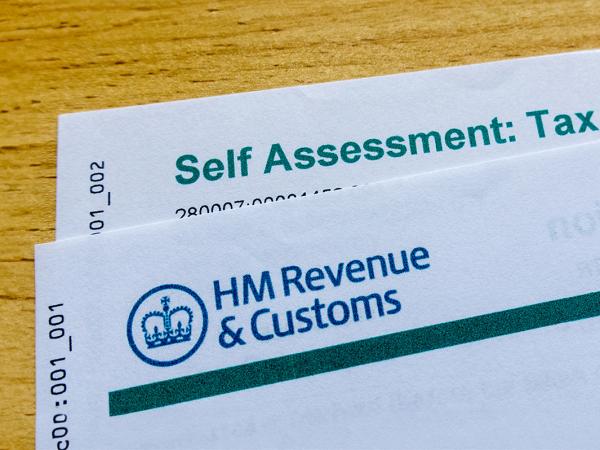Construction industry scheme (CIS)
If you are self-employed in the building or construction trade, then you should pay tax under the Construction Industry Scheme (CIS). This page explains what the CIS is, how you register for the CIS and how your tax position works under the CIS.

Content on this page:
Basics
The Construction Industry Scheme (CIS) is a HMRC scheme which applies if you work for a contractor in the construction industry but not as an employee, so for example as a self-employed individual. The CIS rules mean that the contractor is usually obliged to withhold tax from their payments to you, at a rate of either 20% if you are ‘registered’ or 30% if you are not.
This is different from other self-employed individuals not within the construction industry, who normally receive their payments without any tax being deducted before the payment is made to them (this is called gross payment).
It is important to be clear that even though a contractor is withholding tax under the CIS on payments made to you and you might receive documents very similar to payslips (see under the heading Pay statements below) you are not being treated as an employee and so will not be entitled to any of the employment rights that usually go along with being an employee. There is more information on this under the heading Employment rights below.
The CIS covers more than what you may typically think of as building and civil engineering work, for example it includes work in demolition, site clearing, repairs and decorating, and installing power systems. The HMRC CIS manual details what work is included within the CIS.
Note that if you supply construction industry type services directly to a homeowner (so not to a contractor), then this would not fall under the CIS and the customer would pay you in full (gross), usually on receipt of your invoice.
The amount of tax that must be deducted by the contractor depends on whether you register as a subcontractor under the CIS.
Scope
You should only pay tax under the Construction Industry Scheme (CIS) if you are genuinely self-employed.
Not everyone who works in the construction industry is self-employed. Contractors have an obligation to decide if their workers are employed or self-employed.
Whilst most contractors would no doubt prefer to take on workers on a self-employed basis (as this means less cost/fewer responsibilities/paperwork etc for them), self-employment is a question of fact, not choice. You can read more about deciding employment status on our page Employed, self-employed or neither.
In situations where a person works exclusively for one contractor and does not have the risks of running a business, then they are likely to be an employee, rather than self-employed – even if the work arrangement is only for a very short time, or they have an existing unique taxpayer reference (UTR) or they provide their own small tools.
If you are regarded as an employee of the contractor, then income tax (and National Insurance contributions) will need to be withheld at source by the contractor under the pay as you earn (PAYE) system and you should receive payslips every payday. If you are an employee but are then passed to an umbrella company or another intermediary to be paid, then you should read our specialist guidance.
Registering with HMRC
Both contractors and subcontractors need to consider whether they should register with HMRC under the Construction Industry Scheme (CIS).
It is possible to be both a contractor and subcontractor at the same time.
Contractors
If you are engaging other self-employed workers doing construction work, then you are a contractor and must register under the CIS. There is more information on how to register for the CIS as a contractor on GOV.UK.
Subcontractors
As a self-employed worker, it is more likely that you will be engaged, or taken on, by a contractor to perform some construction work. This will mean you are a subcontractor. If you are a subcontractor, then you can choose whether or not to register under the CIS.
GOV.UK explains how you can register for the CIS as a subcontractor and what information you will need to be able to register. There are different methods depending on whether or not you have already registered as self-employed and if you are working for yourself as a sole trader or through a different trading entity, such as a partnership or a limited company.
Registration under the CIS is in addition to registration as self-employed for self assessment, not instead of registering as self-employed. This means for those new to both self-employment and the CIS, there are two separate registrations. However, both can be done at the same time.
Tax deductions at 20%
If you decide to register for the CIS, then the contractor must deduct and withhold tax at a rate of 20% of the amount of your invoices. If your invoice includes direct expenses such as for materials or tool hire, then tax should not be withheld from these amounts, so you should be paid 100% of these costs. If you are VAT registered see the heading on VAT below.
Note that ‘self billing invoices’ are quite common in the construction industry – rather than you issuing an invoice for your services, the contractor raises a self-billing document and forwards a copy to you with your payment (the idea is that this makes invoicing easier where the contractor, rather than the worker, determines the pricing). You should always check ‘self billing invoices’ to make sure that they agree to your records and what you expected to be paid.
The 20% deduction is paid by the contractor to HMRC who treat it as an advance payment towards your income tax and National Insurance contributions (NIC) for the particular tax year, as shown by your self assessment tax return. (We explain how the withheld tax payments are taken into account when working out your overall tax position under the heading Self assessment below).
You should receive 80% of the invoice paid directly to you, according to your agreed invoice terms, along with the full amounts for any additional costs, such as materials.
Tax deductions at 30%
If you decide not to register under the CIS then the contractor must deduct and withhold tax at a rate of 30% of the amount of your invoices for your work (but not any amounts you invoice for direct expenses such as materials or tool hire, etc.).
As illustrated in the example above the advantage of registering under the CIS is that the contractor only withholds tax deductions at a rate of 20% instead of 30%.
Gross payment status
If you register for the Construction Industry Scheme (CIS) and your tax affairs are up to date then you can apply to HMRC to have gross payment status in some circumstances, which will allow the contractor to pay you without making any deductions at all. GOV.UK explains the conditions you must meet for HMRC to agree to your application for gross payment status.
You can apply for gross payment status at the same time as registering as a subcontractor.
Self assessment
Under the Construction Industry Scheme (CIS), contractors are required to check whether self-employed subcontractors are registered with HMRC. In order for the contractor to do this, they will need your unique taxpayer reference (UTR) and National Insurance number.
If you are a self-employed subcontractor, the payments you receive under the CIS may be subject to tax deductions (see Registering with HMRC above):
- 20% for CIS registered subcontractors,
- 30% for subcontractors not registered with the scheme.
The amounts withheld by the contractor are paid to HMRC who treat them as advance payments towards your individual income tax and National Insurance (NIC) bill for the relevant tax year.
As you will usually need to complete a self assessment tax return, you will need to include your gross self-employment income on the return. This is your total sales income, which will be the amount that you have invoiced, not the amount you received after the CIS deductions. This is the case even if your invoice includes amounts for things like materials, tool hire etc. Your tax return must also include any business expenses that are to be deducted from your self-employed income to arrive at your self-employed profit.
The amount of tax that has been deducted under the CIS from your payments should be entered in box 38 on page SES2 of the self-employment (short) pages and box 81 on page SEF4 of the self-employment (full) pages. This will mean that when your tax and NIC are calculated the advance payments that have been made through CIS deductions will be taken into account. We show how this works in the example below.
Moira’s tax position, (of overpaying tax through the CIS deductions and being due a refund), is common to many self-employed sole traders who are registered for the CIS but do not have gross payment status. It usually arises because CIS deductions are based on sales income and therefore do not take account of the tax-free personal allowance or business expenses.
See the page Construction Industry Scheme (CIS) tax refunds for more information on how repayments can be obtained.
Scotland and Wales
Devolution of some tax powers means that Scotland now sets its own rates of tax, known as Scottish income tax, and Wales introduced the partial devolution of income tax, the Welsh rate of income tax, in the 2019/20 tax year.
The interaction between the CIS deductions, using the UK rates, and Scottish income tax and the Welsh rate of income tax are explained in our Tax and NIC section.
Pay statements
The rules of the Construction Industry Scheme (CIS) require the contractor to provide at least one ‘payment and deduction’ statement, sometimes called a PDS, each tax month and within 14 days of the end of the tax month (a tax month runs from 6th of one month to the 5th of the next, for example 6 May 2024 to 5 June 2024).
The statement must show the contractor's name, details of the payment(s) made, the cost of any materials incurred, and the deduction(s) made from the payment(s).
It is vital that you retain these statements (as well as details of your expenses) as you will need them to do your tax return. If you do not keep adequate records or complete your tax return correctly or on time, you may have to pay a penalty.
If you have lost or are missing statements, then you need to approach the contractor first to ask for them. HMRC will only provide you with information from their own systems where it can be shown that you have a genuine need and you’ve made every effort to get the missing information. The relevant HMRC contact details can be found on GOV.UK.
If all else fails, then it may be possible to work out the amounts you need for your tax return from looking at your bank statements. For example, if you are a CIS registered, labour-only worker not using the gross payment scheme and received £260 into your bank account, then as this is the amount after 20% tax, you can work out that the ‘gross’ payment will have been £325 by doing the sum £260 x100/80. The difference – £65 – will be the amount of CIS withheld.
Limited companies
You may have heard about supplying your services through your own limited company as a way of saving some tax. However, setting up a limited company is very different from just being 'self-employed'.
There is information on running a limited company on our website. However this, generally, may not be a suitable way to trade for the lower-profit making business because of all the administrative considerations (and you should note that if you are supplying your services to primarily one contractor, then you may well fall under IR35/the off-payroll rules, which makes things even more complicated).
If you do trade as a limited company, then you should be aware that the CIS applies to companies as well as to individuals. Where the CIS tax has been withheld at source from payments made to a company, then the deductions made may be set against the company's liabilities – any PAYE liabilities first (and where the subcontractor itself uses further subcontractors, CIS), then potentially other liabilities. For more information, see GOV.UK.
If you are trading as a limited company which has CIS deductions, then you should seriously consider obtaining professional assistance with your tax position.
VAT
If you are VAT registered, then CIS deductions are not withheld on the VAT element of your invoice.
For more general information on VAT when self-employed see our page VAT when running a business.
VAT is a complex tax – any ‘benefits’ there are of entering the VAT regime can be reduced or wiped out by additional administration, accountancy fees or penalties for getting things wrong. Voluntarily entering the VAT regime is therefore not something to be undertaken lightly.
In addition, on 1 March 2021, a domestic reverse charge , was introduced, aimed at tackling fraud in the construction sector. The VAT reverse charge rules will apply to suppliers of specified services, reported under the CIS.
You can watch a HMRC webinar on GOV.UK on these VAT reverse charge rules.
Employment rights
Employment rights depend on an individual’s employment status for employment law purposes. This can be different to employment status for tax law purposes. This is because tax law only recognises two types of status – employed and self-employed. For employment law, there are three potential statuses to consider – employee, ‘worker’ and self-employed.
Construction industry workers within the scope of the Construction Industry Scheme (CIS) are often classified as self-employed. This means that as far as employment rights go, they have very little protection under employment law.
There are some people working in the construction industry who should be treated as an employee but are being treated as self-employed incorrectly. Even where they are being treated as self-employed correctly for tax purposes, they might be a worker for employment law purposes.
See our Employment rights page for more information on the employment rights associated with each employment status.
There is more general information on ‘worker’ status on GOV.UK.
More information
There is more information on the CIS on GOV.UK including information on What you must do as a CIS subcontractor? and Booklet 340 which contains detailed guidance for both contractors and subcontractors.
HMRC runs webinars about the CIS and you can also contact HMRC’s CIS Helpline and HMRC have produced a Tax Facts film which explains the CIS for school leavers.
You may find our guide to self-employment helpful. It explains the less common tax rules and contains more detailed information, including a case study showing how to prepare accounts and what to include on your 2023/24 tax return.



